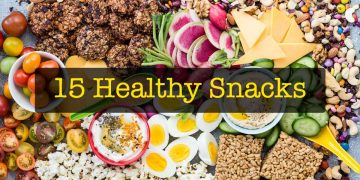Do the advertisements claiming to know “the secret for reducing belly fat” or “the ultimate tips for tummy trimming” tickle your curiosity? If so, you’re not alone, we all are!
The fat accumulated around your midsection creating those “love handles” not only makes you look disfigured but has serious health implications as well. So, shedding it off is going to make you healthier inside out, it’s a win-win!
Read on to know more about belly fat and how you can reduce it.
Different Types of Belly Fats
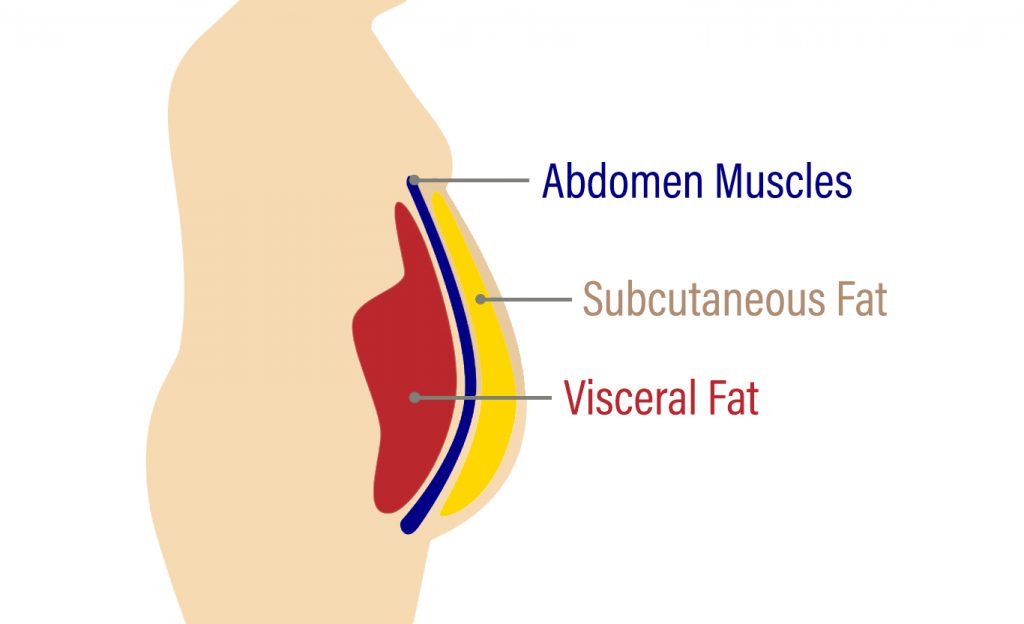
Belly fat is the stubborn fat that sits around the abdomen and surrounds the organs in your stomach. It is known to be the most harmful of all.
There are mainly 2 types of fat in your body:
#1 Subcutaneous fat (aka the jiggly fat)
It is the layer of harmless fat that accumulates below the surface of your skin and protects your muscles and bones from any jerks or falls. It also acts as an insulation and helps the body regulate its temperature.
Apart from this, the subcutaneous fat produces essential hormones – “Leptin” and “Adiponectin” that help in regulating your appetite and also the sugar and fat levels in the body that in turn, protect you against diabetes.
#2 Visceral Fat (The tough one!)
It is the fat that is stored between your muscles and vital organs. This happens when you gain too much weight and your regular fat-storing areas become so full that the excess fat starts getting stored in these unusual places in the form of fat cells. It has been found out through research that the majority of these fat cells are present in your abdomen area and hence, contribute significantly to your belly fat.
Why is Belly Fat dangerous?
It is the visceral fat that is the stubborn one and causes your belly to bulge out. Visceral fat is important for the body as it provides cushioning to the organs however, high visceral fat values are linked to many serious health conditions including high blood pressure, insulin resistance, and type 2 diabetes, heart diseases, high cholesterol levels, etc. It is also known to interfere with the functioning of hormones that regulate appetite, mood, brain functions, and also the cortisol levels that are responsible for stress.
Worried? Don’t be, as the tips mentioned in this article would help you in reducing the belly fat and in turn, keep you away from the dreadful health risks that it poses.
What Causes Belly Fat?
As it is said “treat the problem rather than the symptom”, let us first try to identify what could be contributing to your belly fat. Apart from eating too much and moving little, there could be several other things as well, read on to unravel the possible causes:
Too Worried About Something?

When you keep worrying about something day and night long, it leads to stress. During these stressful periods, the level of stress hormone “cortisol” increases and is known to favor the accumulation of fat around your abdomen since it increases your appetite and cravings for unhealthy foods.
So, it is vital to tackle these stress symptoms and identify ways to relieve all that tension and anxiety.
You’re Having More Trans Fats
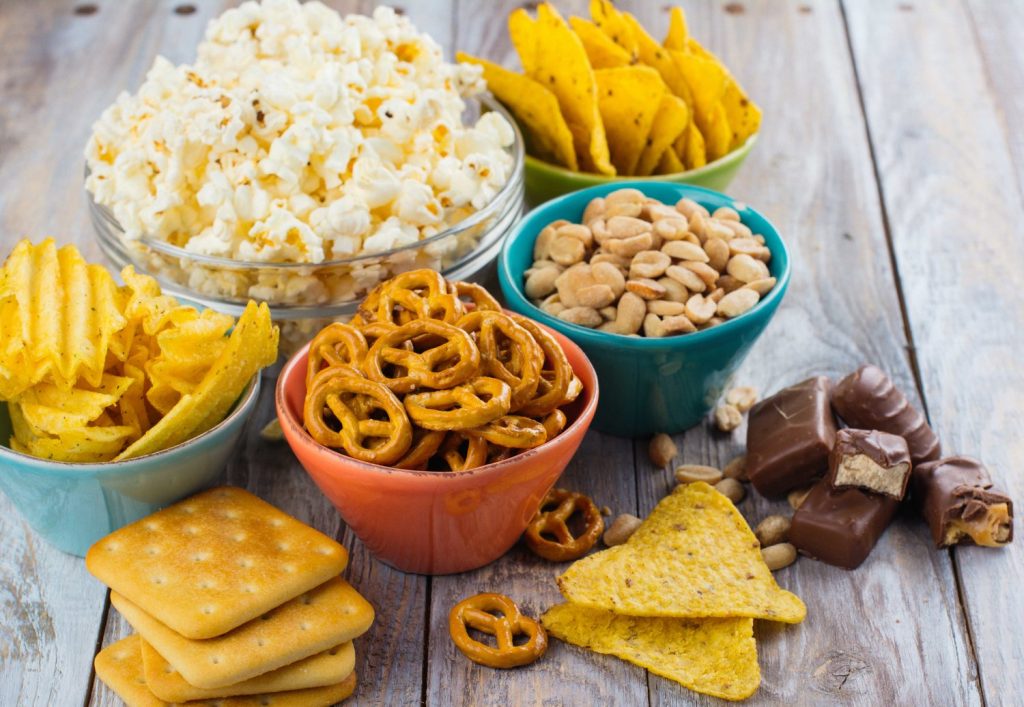
Trans fats are artificial fats that are added to processed foods for increasing their shelf lives. This bad fat contributes to high cholesterol levels and is certainly known to increase the amount of fat around your abdomen which in turn, can lead to a risk of cardiovascular diseases. This has been scientifically proven too!
As per a recent study, Trans fat-rich foods contribute to those love handles by not only adding new fat but also by redistributing fat from other areas into the belly! Can you believe it? So now we have all the more reasons to keep away from them.
Unfortunately, the majority of your easy-to-grab foods contain partially hydrogenated vegetable oils and fall under this category. These include fast-foods, frozen pizzas, microwave popcorns, coffee creamers, fried foods, pre-prepared products like pizza crusts, cookie doughs, etc.
So, try to limit the intake of such foods and embrace healthy fats (e.g.: avocados, nuts, seeds, eggs, etc.) for achieving your tummy trimming goals.
You Might Be Bloated
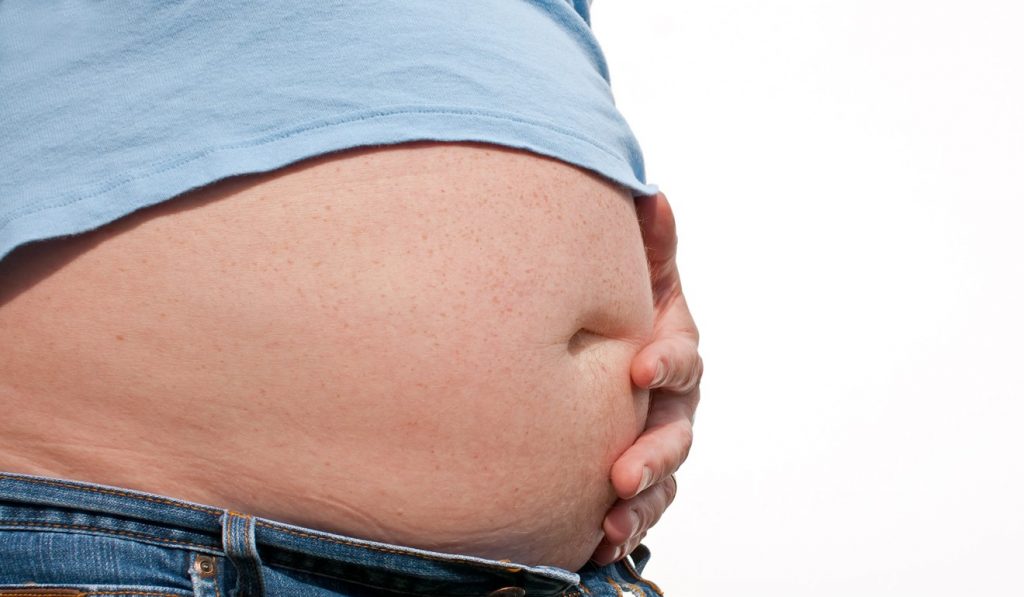
Do you tend to feel too full after meals in spite of not eating that much? Or do you have those dreadful acid reflux symptoms, or maybe issues emptying your bowels?
Abdominal bloating could also be a result of water retention, intake of excess salt, eating too fast, or by the consumption of a particular food like dairy sugar called “lactose” that your body finds difficult to digest.
Various studies have shown that Apple Cider Vinegar (ACV) helps significantly to reduce bloating and in turn, helps reduce your belly fat. To know more about it, refer to Apple Cider Vinegar for Weight Loss- Does it really work?
Apart from this, you should also consult a dietician and do some detective work together to identify the underlying cause.
There are many other causes that contribute to the extra fat around your belly including consuming too much alcohol, having a sedentary lifestyle, less sleep, etc.
Do some of these causes seem relatable? Okay, now let us see how we can go about and reduce this belly fat that has comfortably found its home around your waistline.
9 Ways to Reduce Belly Fat
Belly fat likes inactivity, so it is a combination of making simple alterations to your diet along with an active lifestyle that would help you excel.
Most of the time people try to follow strict diets and find it more and more difficult, the longer they stick to it. So, here are 9 quick guidelines that you could use to start burning body fat and the belly fat as soon as possible without having to torture yourself in the process.
#1 Limit High Sugar foods
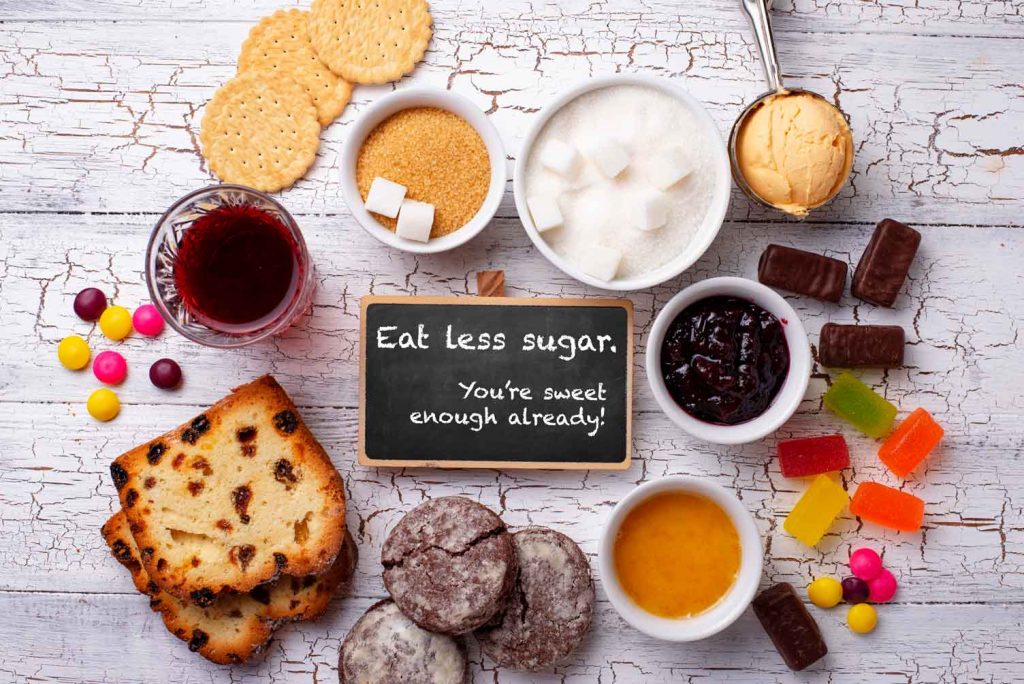
Sugar not only tastes good in the moment but it makes you crave more sugar in the future. When you eat your favourite ice creams, pastries, and cookies you increase the sensitivity of your palate, in turn, making the natural sources of sugar like fruits less sweet and satisfying.
Getting to the science behind this, when you consume sugary foods, it spikes up the insulin in your blood thereby, increasing insulin sensitivity. It is this insulin hormone that is responsible for those love handles.
So, this does not mean that you cannot have something sweet, you can reward yourself with your favourite ice cream, smoothie, etc. at the end of the week and also try satisfying your sweet tooth with natural sugar sources like fruits whenever that craving strikes in.
#2 Eat More Protein
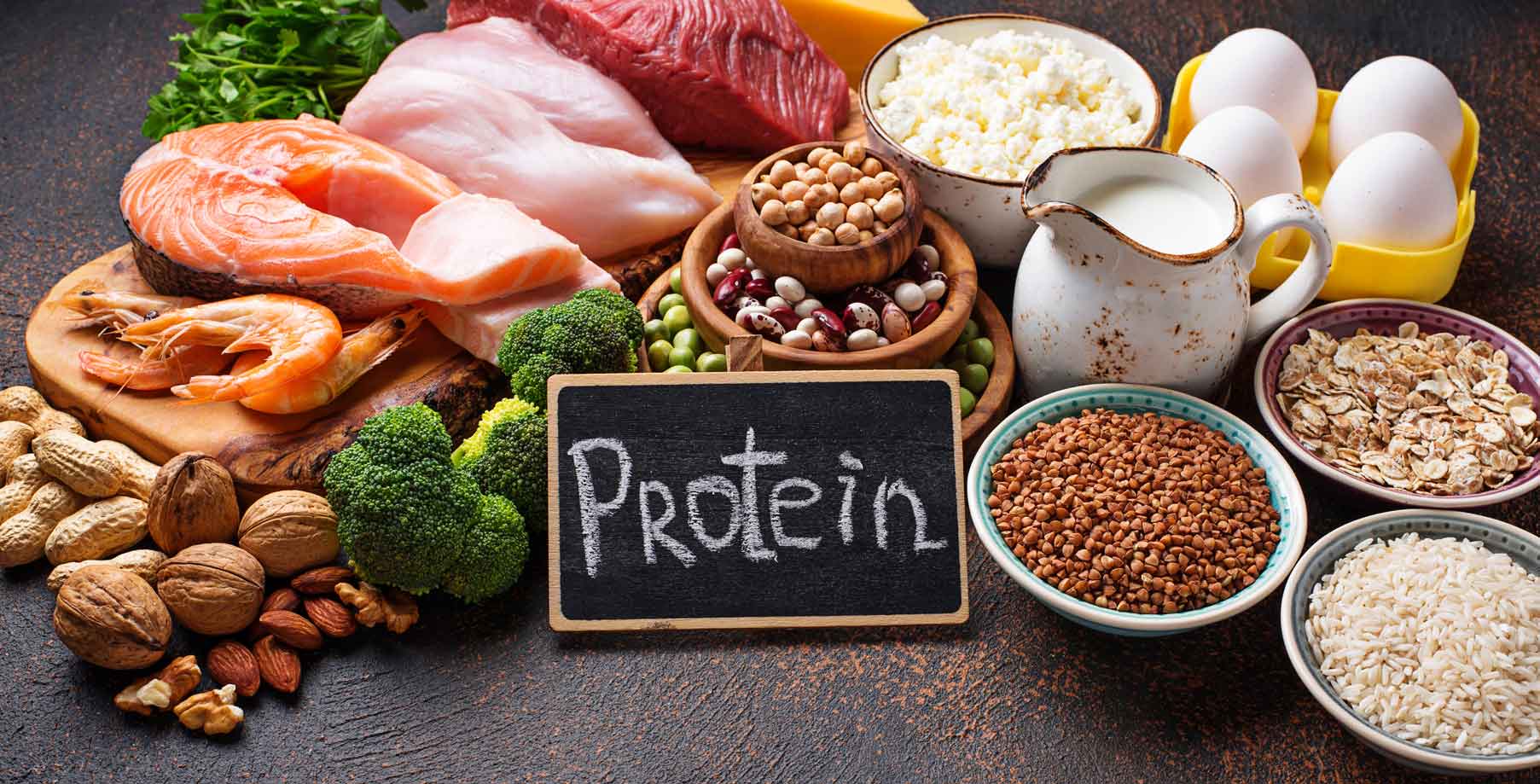
As it is said “abs are built in the kitchen”, a healthy diet equally contributes to fat loss as a regular exercise routine.
Studies have shown that protein helps fill you up easily and reduces hunger. Another benefit is that protein requires significantly more energy to digest compared to carbs and fats, so having a high protein diet would, in turn, increase your metabolism.
Studies have also shown that replacing few carbohydrates with protein in your daily diet, may reduce abdominal obesity.
It is also great for building muscle. However, eating too much protein would not give you any extra benefits. According to research, it is found that the ideal protein intake per meal should not exceed 0.7 to 0.8 gm per pound (0.5 kg) of body weight per day i.e. if you weigh 70 kilograms then, the protein intake should not exceed 112 grams per meal.
There might be days when you feel things going over the edge, it is okay to have a cheat meal occasionally!
The trick is to have a small, high protein meal before eating the things that you are craving. This would help in taking the edge off your hunger and save you a lot of calories.
Lean meat, poultry, eggs, and fish are some of the common sources of protein and if you’re a vegetarian, there is a wide variety of protein-rich foods for you too! To know more about these, read 10 best Indian Vegetarian Protein Rich Foods.
#3 Consume Fewer Carbohydrates
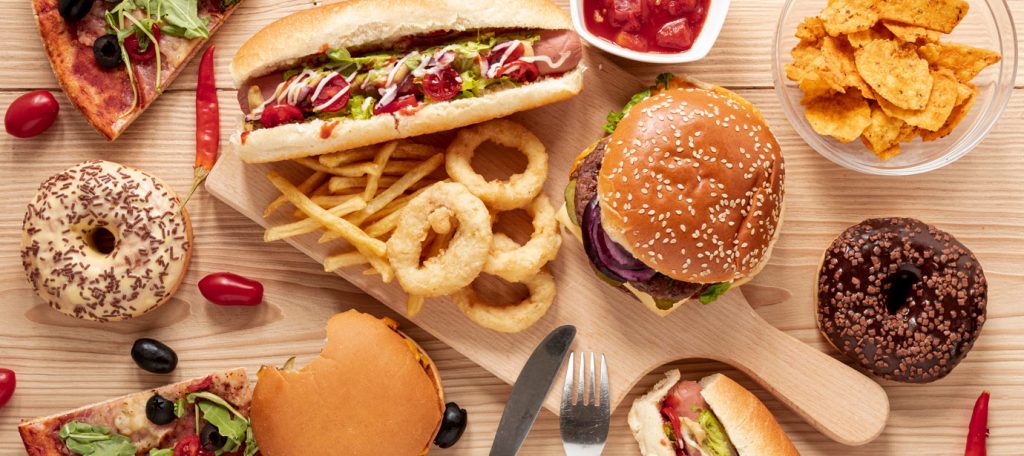
Carbohydrates are the main source of energy for the body, as they are broken down and utilized as glucose by the cells. But again, as you know too much of anything is bad, so are the carbs!
Getting to the basics, on a high carb diet, insulin needs to work overtime to withstand the overburden of carbohydrates, and this leads to a condition called insulin resistance.
In such a situation when the ability of insulin to regulate glucose declines, the energy starts getting stored in the form of unhealthy fat aka belly fat!
So, try to limit the intake of potatoes, chips, cereal bars, milkshakes, canned fruits, bread products, etc. in your diet as these sources are enormously rich in carbohydrates.
Once you have got the hang of it, you can try moving to a low-carb, high fat Keto diet that is known to accelerate your fat loss progress.
#4 Limit Alcohol

Overdoing with liquor would make it even more difficult for you to get off with that belly fat. Since fats are metabolized in the liver, when you consume a lot of it, the body gets busy in getting it out of the system rather than prioritizing the breakdown of fat.
Drinking excess beer and wine can add a lot of sugar to your diet and thereby would again spike the insulin levels.
As per a study, people who consumed more than 3 drinks of alcohol in a day were are at a greater risk of abdominal obesity compared to people who did not.
It is best to avoid alcohol completely but if you have to take then, rather choose unflavoured liquors like vodka, rum, tequila, and mix it with water or any calorie-free beverage.
#5 Eat More Soluble Fiber
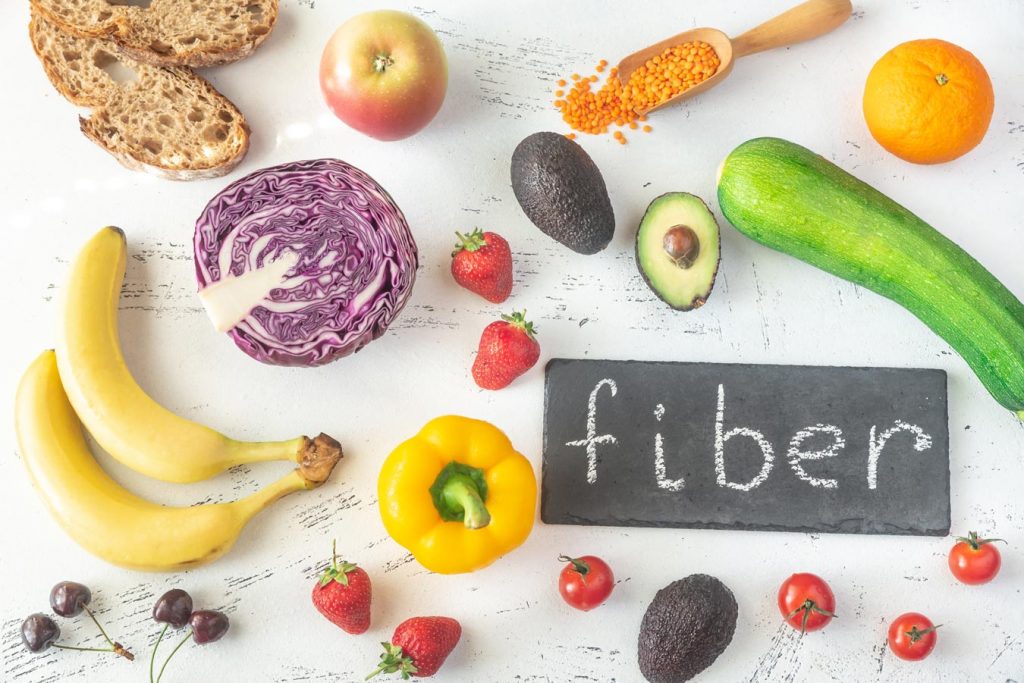
Intake of soluble fiber can help reduce visceral fat. Soluble fiber can help slow down the delivery of digested food from your stomach to your intestines, which reduces appetite and, in turn, can reduce visceral fat.
Soluble fiber helps reduce hunger by making you fuller for a long time and increases satiety.
Sources of soluble fiber include oats, avocados, seeds, lentils, and fruits like apples, strawberries, and citrus fruits.
#6 Get Enough Sleep

As per a recent study, people who slept for less than 5 hours every night found to have more abdominal fat compared to those who averaged around 7 hours.
Getting enough sleep helps balance your hormone levels i.e. increase Cortisol and decrease Testosterone, which in turn, helps promote fat loss. Aim to sleep for at least 7-8 hours every night for maintaining a healthy lifestyle.
#7 Get Moving

Not a fan of exercising? Don’t worry, you can start by adding simple activities to your routine like brisk walking, swimming, yoga etc.
Once your diet and exercise routine is in check, you can add some high-intensity interval training to your schedule. You can turn any exercise into a high-intensity one by doubling or tripling the pace. These intense exercises get your heart rate up as you work extremely hard for a short duration like 45-60 seconds and then take a break for the next 30-60 seconds.
So, the most effective approach to tap belly fat is to combine both medium and high-intensity workouts as high-intensity workouts help in mobilizing the fat while the medium ones help in actually torching the fats.
#8 Become a Label Reader

Before picking up any packaged food at the grocery store, do give a glance at its nutritional contents. Now, what do you need to look out for exactly: the calories, carbs, and sugar content.
There are a number of products available that claim to be healthy like fruit juices, smoothies, breakfast cereals and granola bars, etc. but contain tons of added sugar and are also full of preservatives. So, it is a good habit to compare the labels of similar products and pick a healthier option for yourself.
#9 Don’t Overdo Anything
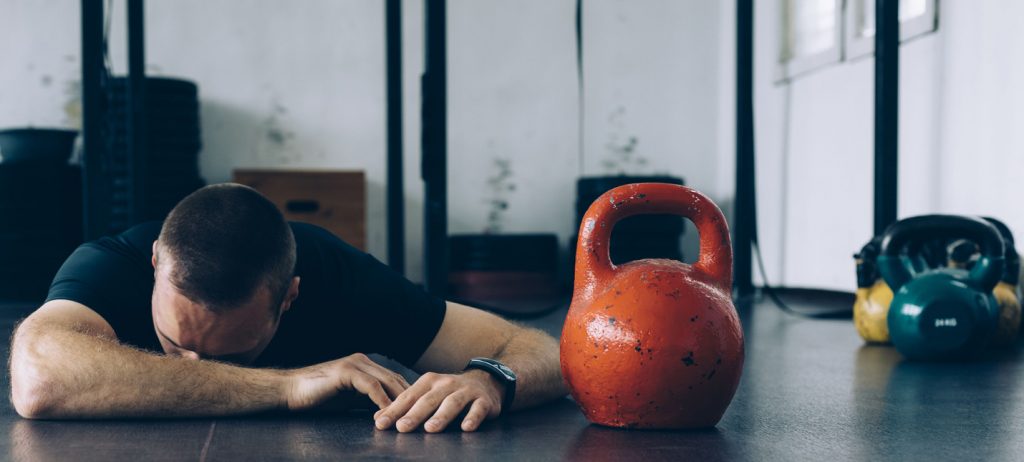
It can be hard following a diet or exercising especially when you are not used to it. Give in your best but when you feel things are going beyond a normal limit then take a short break and let your body heal. Remember, you DO NOT have to be guilty about it, come on we all have those days! Stay motivated and get going.☺
Summary
It is your genetics and all the other factors mentioned above that gets to decide where the fat settles in your body. There is no magic diet for belly fat but when you lose weight overall, the belly fat usually goes first. So, just by exercising and improvising your diet, you can not only lose belly fat but also the excess body fat from other areas.
Most importantly, remember that it is your health and not your weight, that matters the most.




